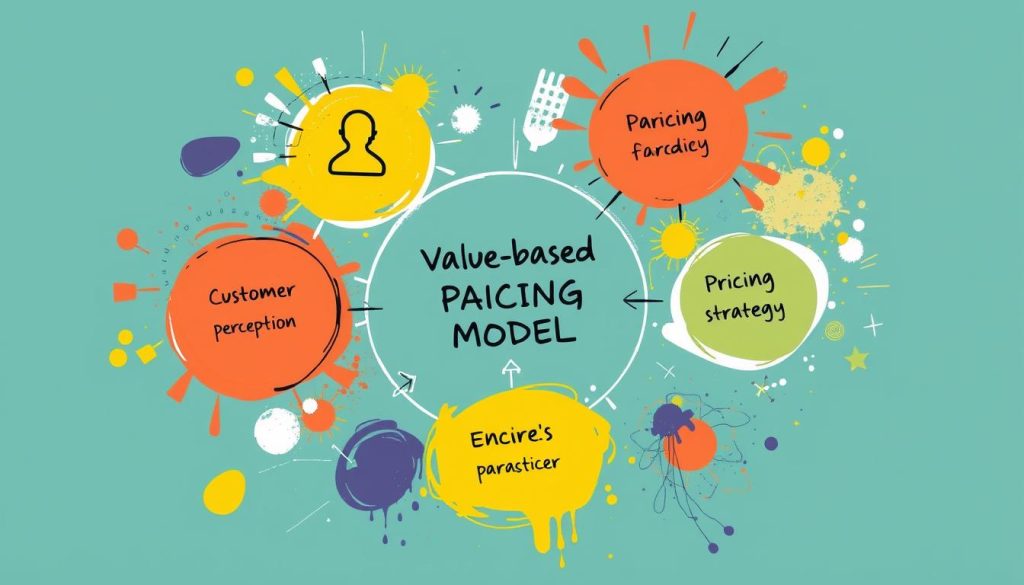Are you struggling to determine your worth in the ever-evolving freelance market?
As the number of freelancers continues to grow – with an estimated 64 million people doing freelance work in the United States in 2023, and a projected 76.4 million in 2024 – the need to set competitive freelance rates has become increasingly important.
This comprehensive guide will walk you through the process of setting rates that not only attract clients but also ensure you’re fairly compensated for your time and expertise.
Table of Contents
Key Takeaways
- Understand the current state of the freelance market and its growth statistics.
- Learn how to determine competitive rates based on industry standards and your skill set.
- Discover key factors that impact your earning potential, including geographic location and experience level.
- Explore different pricing strategies to suit your business needs.
- Gain practical insights into calculating your minimum viable rate and negotiating with clients.
The Current State of Freelancing in 2023
In 2023, the freelance market is experiencing unprecedented growth, driven by professionals seeking flexibility and businesses needing specialized skills. This shift is redefining the modern workplace, offering freelancers the autonomy to choose their projects and work at their own pace.
Growth of the Freelance Market
The freelance market has seen significant expansion, with more professionals opting for freelance careers. This growth is attributed to the increasing demand for specialized skills and the flexibility that freelancing offers. As a result, freelancers are now an integral part of the workforce, contributing to various industries.
The table below highlights the key statistics driving the growth of the freelance market:
| Category | 2022 | 2023 |
|---|---|---|
| Freelance Workforce | 30% | 35% |
| Average Hours Worked | 40 hours/week | 42 hours/week |
| Businesses Hiring Freelancers | 60% | 70% |
Freelancing vs. Traditional Employment
When comparing freelancing to traditional employment, several factors come into play. While traditional employment offers stability and predictable income, freelancing provides unlimited earning potential and the flexibility to choose one’s work schedule and projects. Freelancers must, however, account for business expenses and self-employment taxes, which can impact their net earnings.
The key differences between freelancing and traditional employment are summarized below:
- Freelancing offers greater flexibility and autonomy.
- Traditional employment provides stability and predictable income.
- Freelancers have unlimited earning potential.
- Freelancers must manage their own business expenses and taxes.
As the freelance market continues to grow, understanding these differences is crucial for professionals considering their career options.
Understanding Freelance Rates Across Industries
Understanding the landscape of freelance rates is crucial for professionals looking to navigate the competitive market effectively. The rates charged by freelancers vary significantly across different industries, influenced by factors such as the level of expertise required, industry standards, and client budgets.
Top-Paying Freelance Industries
The highest paying freelance industries in 2023 include fields that require specialized skills and expertise. According to recent data, industries such as software development, data analysis, and cybersecurity tend to offer higher rates compared to more general creative fields.
Average Rates by Skill Set
Freelance rates can also vary significantly based on the specific skills and experience of the freelancer. For instance:
- Technical skills like software development, data analysis, and cybersecurity typically command higher rates, with specialized developers earning $50-150 per hour.
- Writing rates vary dramatically by specialization, with technical writers and specialized content strategists earning $50-100/hour, while general content writers earn $20-35/hour.
- Design skills show similar variation, with UX/UI designers commanding premium rates of $50-75/hour, compared to general graphic designers who earn $25-40/hour.
- Marketing specialists with demonstrable ROI metrics and conversion expertise can charge 30-50% more than general marketers, with rates for performance-based marketing consultants reaching $100-150/hour.
- Emerging skills in artificial intelligence, machine learning, and blockchain development represent the highest-paying skill sets in 2023, with experienced professionals easily commanding $100-200 per hour.
By understanding these trends and adjusting their rate accordingly, freelancers can better position themselves for success in their chosen industry.
Key Factors That Impact Your Freelance Rates

Setting a competitive freelance rate requires understanding various influencing factors. As a freelancer, your hourly rate is crucial for sustaining a successful career. Several elements contribute to determining your rate, ensuring you’re fairly compensated for your work.
Geographic Location and Market Differences
Your geographic location significantly impacts your freelance rate. Different regions have varying costs of living and market conditions, affecting how much you should charge. For instance, freelancers in North America and Western Europe tend to charge higher rates compared to those in other regions. Understanding the local market and adjusting your rate accordingly is essential.
Experience Level and Expertise
Your experience level and expertise play a crucial role in determining your freelance rate. More experienced freelancers with specialized skills can command higher rates. Clients are willing to pay a premium for high-quality work, making it essential to assess your expertise and adjust your rate accordingly.
Portfolio Strength and Client Reviews
A strong portfolio and positive client reviews can significantly impact your ability to charge higher rates. A robust portfolio showcases your skills and experience, while positive reviews build trust with potential clients. This can justify higher rates as clients are willing to pay for proven quality.
Gender Pay Gap in Freelancing
Unfortunately, the gender pay gap persists in freelancing, with male freelancers charging on average 26.4% more than their female counterparts for comparable services. According to recent data, this gap varies significantly by region. For example, in North America, men earn $52/hour compared to $37/hour for women, while in South America, women earn slightly more than men. Research indicates that the gap stems partly from different rate-setting approaches and negotiation strategies.
- The freelance gender pay gap varies significantly by region.
- Women are more likely to undervalue their services and less likely to negotiate aggressively.
- Platform anonymity can help reduce the gap.
- Awareness of the gap is driving change among female freelancers and clients.
Understanding these factors and how they interplay is crucial for setting a competitive freelance rate. By considering your location, experience, portfolio strength, and being aware of the gender pay gap, you can determine a fair and competitive rate for your services.
Pricing Strategies for Freelancers
The freelance market offers various pricing strategies, each with its advantages and disadvantages. As a freelancer, choosing the right pricing model is crucial to ensure fair compensation for your work and to maintain a competitive edge in the market.
Hourly vs. Project-Based Pricing
Freelancers often debate whether to charge hourly or project-based rates. Hourly pricing provides a straightforward way to bill clients based on the time spent on a project. However, it may not account for the value delivered to the client. On the other hand, project-based pricing involves quoting a fixed rate for the entire project, which can be more lucrative if managed efficiently.
For instance, an hourly rate of $140 might seem attractive, but it may not be the most business-savvy decision if it doesn’t reflect the project’s value. Project-based pricing allows freelancers to charge based on the project’s complexity and the value it brings to the client.
Value-Based Pricing Models
Value-based pricing is a strategy where freelancers charge clients based on the value or results delivered, rather than the time taken. This approach requires a deep understanding of the client’s needs and the potential impact of the freelancer’s work. By focusing on the outcome, freelancers can align their pricing with the client’s goals and successes.
For example, a freelancer who helps a business increase its revenue through their services can charge a premium based on the value added. This model encourages freelancers to deliver high-quality work and to focus on achieving tangible results for their clients.

Package and Retainer Options
Package pricing and retainer arrangements are other effective strategies for freelancers. Package pricing simplifies the buying decision for clients by offering pre-defined service bundles at fixed rates. This approach makes services more accessible and can attract new clients.
Retainer arrangements, on the other hand, provide freelancers with predictable income and clients with reliable access to services. Monthly retainers have become popular, especially in creative and marketing fields, where clients pre-purchase a set number of hours or deliverables at a guaranteed rate.
- Package pricing simplifies the buying decision for clients by offering pre-defined service bundles at fixed rates.
- Retainer arrangements provide freelancers with predictable income and clients with reliable access to services.
- Strategic packaging involves creating tiered options that appeal to different client segments and budget levels.
How to Calculate Your Competitive Freelance Rate
A well-calculated freelance rate is the foundation upon which a prosperous and enduring freelance career is built. To determine this rate, freelancers must consider several key factors that impact their pricing.
Determining Your Minimum Viable Rate
Your minimum viable rate is the lowest amount you can charge per hour or project while still meeting your financial needs. To calculate this, start by identifying your annual financial goals and the number of hours you plan to work. For instance, if you aim to earn $50,000 annually and plan to work 1,000 hours, your minimum viable rate would be $50 per hour. This rate serves as a baseline, ensuring you cover your essential expenses.
Researching Market Rates in Your Niche
Understanding the market rates in your niche is crucial for setting a competitive freelance rate. Research platforms like ZipRecruiter, which reported an average freelancer wage of $48/hour in 2024, can provide valuable insights. Additionally, analyzing industry reports and surveys can help you gauge the going rate for your services. This research will enable you to position your rates competitively while reflecting your expertise and the value you bring to clients.
Accounting for Business Expenses and Taxes
As a freelancer, you’re responsible for both your business expenses and taxes, which can significantly impact your net earnings. Business expenses typically range from 25-35% of your gross income, covering costs such as software subscriptions, equipment, and professional services. Moreover, freelancers face higher tax burdens, including self-employment taxes that effectively double Social Security and Medicare contributions. Using the « rule of thirds » can be a helpful guideline, allocating one-third of your gross income to taxes, one-third to business expenses, and one-third to your take-home pay.
By carefully determining your minimum viable rate, researching market rates, and accounting for business expenses and taxes, you can set a competitive freelance rate that supports your financial goals and fosters a sustainable business model.
Negotiating Rates with Clients

Negotiating rates with clients is a crucial skill for freelancers to master in order to ensure fair compensation for their work. This process involves more than just stating a rate; it requires understanding the client’s needs, being aware of the market standards, and confidently articulating one’s value.
Handling the « What’s Your Rate? » Question
When clients ask about your rate, it’s an opportunity to discuss the project’s scope and your value proposition. Instead of providing a direct answer, consider asking about their budget to gauge whether it aligns with your expectations. This approach helps avoid the « you tell me first » game, saving time for both parties.
Strategies for Raising Your Rates with Existing Clients
To raise your rates with existing clients, focus on the value you’ve delivered and the quality of your work. Prepare by documenting successful projects and feedback. When discussing rate changes, emphasize how your work benefits the client and explain that the adjustment reflects your growing expertise and the value you bring to future projects.
When to Walk Away from Low-Paying Opportunities
Recognizing when to decline low-paying work is as important as setting your rates. If a client is unwilling to discuss budget or is shocked by your rates, it’s a red flag. Walking away from such opportunities can prevent opportunity costs and protect your professional reputation. It’s about being strategic about the projects you take on and focusing on those that align with your business goals and financial needs.
Conclusion
Freelancing offers the unique advantage of choosing your projects and setting your rates, a freedom that’s both empowering and challenging. As you navigate this landscape, setting competitive freelance rates becomes crucial. It’s a process that requires ongoing market research, self-assessment, and strategic positioning to maximize your earning potential while remaining attractive to your ideal clients.
Your rate-setting approach should evolve throughout your freelance career, typically starting with competitive market-based rates and gradually transitioning toward value-based pricing as you build expertise and a strong portfolio. Regular rate reviews are essential to prevent rate stagnation and ensure long-term success. By viewing your rates as a key part of your overall business strategy, you can attract your ideal clients and position yourself effectively in the market. This strategic approach to freelance rates is vital for thriving in the ever-evolving freelance marketplace.
FAQ
How do I determine my hourly rate as a freelancer?
To determine your hourly rate, consider your desired annual income, business expenses, and the number of billable hours you can work in a year. Researching the market rate in your niche and adjusting your rate accordingly can also help.
What factors should I consider when setting my project-based pricing?
When setting project-based pricing, consider the scope of work, the complexity of the project, the time required to complete it, and the value you bring to the client. You should also research what other freelancers in your niche are charging for similar projects.
How do I negotiate my rate with a potential client?
To negotiate your rate, be confident in the value you bring to the client, and be prepared to explain your pricing. Highlight your skills, experience, and the benefits you can deliver to the client. Be open to negotiation, but also be clear on your minimum acceptable rate.
Can I charge different rates for different clients?
Yes, you can charge different rates for different clients based on factors such as the client’s budget, the scope of work, and the level of expertise required. However, be cautious not to undervalue your services or create inconsistent pricing that may confuse clients.
How often should I review and adjust my pricing?
It’s a good practice to review your pricing regularly, such as every 6-12 months, to ensure it remains competitive and aligned with your growing experience and expertise. You should also adjust your pricing when you gain new skills, take on more complex projects, or experience changes in your business expenses.
What are some common pricing mistakes that freelancers make?
Common pricing mistakes include undercharging due to lack of experience or confidence, not accounting for business expenses and taxes, and not adjusting pricing to reflect changes in the market or their skills. Freelancers should also avoid pricing themselves out of the market by charging too high.




